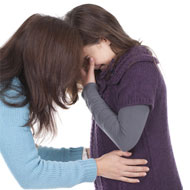- Pregnancy Miscarriage Trimester
- Miscarriage Signs First Trimester
- Miscarriage Second Trimester
- Miscarriage at 6 Weeks
- Miscarriage Cramps
- Miscarriage Without Cramps
- Pregnancy Test Miscarriage
- Miscarriage Effects
- Signs of Miscarriage At 8 Weeks
- Miscarriage Complications
- Pregnancy Miscarriage Symptoms
- Miscarriage at 10 Weeks
- Miscarriage at 4 Weeks
- Miscarriage Recovery
- Miscarriage Causes
- Miscarriage Back Pain
- Miscarriage Pain
- Miscarriage Brown Discharge
- Miscarriage Dreams
- Miscarriage Diagnosis
- Miscarriage Emotions
- Miscarriage Fever
- Miscarriage Nausea
- Miscarriage 11 Weeks
- Miscarriage 5 Months
- Miscarriage Third Trimester
- Miscarriage Bleeding
- Miscarriage at 12 Weeks
- Miscarriage Clots
- Miscarriage Genetic
- Miscarriage Infection
- Miscarriage Misdiagnosis
- Miscarriage at 16 Weeks
- Miscarriage Discharge
- Miscarriage IUD
- Miscarriage Length
- Miscarriage Lower Back Pain
- Miscarriage Morning Sickness
- Miscarriage Grief
- Recurrent Miscarriage Treatment
- Miscarriage Vomiting
- Miscarriage Vitamin C
- Miscarriage Twins
- Miscarriage 15 Weeks
- Miscarriage 3 Months
- Miscarriage Causes First Trimester
- Miscarriage Frequency
- Miscarriage Hereditary
- Miscarriage Diarrhea
- Miscarriage Treatment
- Miscarriage UTI
- Miscarriage 14 Weeks
- Miscarriage 13 Weeks
- Miscarriage 2 Months
- Miscarriage 6 Months
- Vaginal Discharge After Miscarriage
- Miscarriage At 17 Weeks
- Miscarriage Infection Symptoms
- Miscarriage 20 Weeks
- Multiple Miscarriage Treatment
- Post Miscarriage Bleeding
- Miscarriage Causes Second Trimester
- Miscarriage 7 Months
- Miscarriage Infection Signs
- Lower Back Pain Miscarriage
- Miscarriage 19 Weeks
- Miscarriage 4 Months
Uterine Malformations - A Cause of Miscarriages
Abnormalities of the uterus may sometimes increase the risk of the occurrence of a miscarriage. In some cases, uterus problems may also be a cause of recurring miscarriages. Malformations of the uterus may sometimes be present at birth, while some abnormalities may also develop during adulthood.
There are some malformations which may not pose any problems for conception and pregnancy, while some may require treatment as they elevate the risk of miscarriages. Uterine malformations are diagnosed following a hysteroscopy or a hysterosalpinogram.
Bicomuate and Retroverted Uterus After Miscarriage
The most common type of congenital uterus abnormality is a uterine septum which is actually a band composed of tissue that divides the uterus partially. Usually there is a poor blood supply in the septum. If an egg, after fertilization, becomes implanted on the septum, a miscarriage is likely to occur. Treatment for this abnormality involves a minor surgical procedure. In case of a bicornuate uterus, miscarriage is also likely. This congenital malformation results in a heart shaped uterus. Many women do not experience complications from this, but there are some cases in which preterm labor is likely to occur. There may also be an association between a retroverted uterus and miscarriage. This is also known as a tilted or tipped uterus and is characterized by a backward tilting of the uterus. This condition rarely needs treatment and is seen as a normal variation.
In majority of cases, the uterus regains its normal position during pregnancy. In some cases, however, the uterus remains tilted and becomes trapped in the pelvis. This results in a condition known as incarcerated uterus which may lead to miscarriage in the second trimester or other complications in the pregnancy.
Other uterine malformations include a unicornuate uterus in which there is improper development of one side of the uterus, didelphic uterus, which is essentially a double uterus; T-shaped uterus which is involved in recurrent miscarriages; cervical insufficiency, wherein the cervix starts to dilate too early; and fibroids which can develop in adulthood and cause a miscarriage.
In many cases, some of the tissue and products of conception remain in the uterus after miscarriages. This may be removed through curettage of the uterus in which the tissue is scraped from the uterus. Bleeding may result and in some cases, an infection may also develop. The ovaries will begin to produce an egg after about two weeks following the miscarriage and a period will take place within 4-6 weeks. A check up with the doctor is advisable after six weeks to rule out the possibility of further complications and to ensure that the uterus has regained its normal size.


